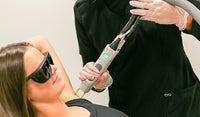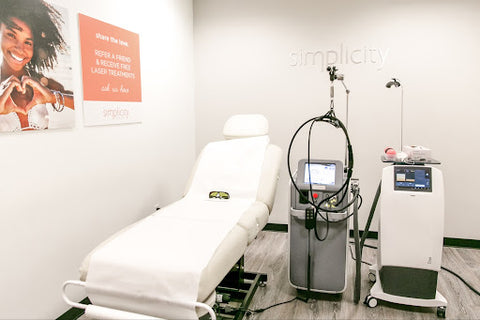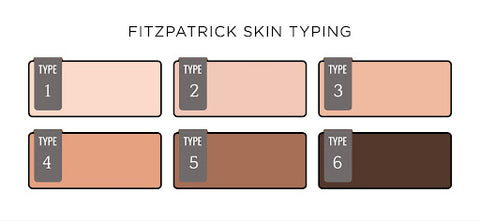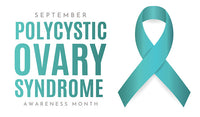Understanding the Different Skin and Hair Types for Laser Hair Removal

Laser hair removal has revolutionized how we achieve smooth, clinically hair-free skin. However, it's important to understand that not all skin and hair types are the same, and their characteristics can influence your laser hair removal treatments. In this blog post, we will explore the relationship between skin and hair types and laser hair removal, helping you better understand how these factors impact the procedure's outcomes.
The Fitzpatrick scale is a valuable tool in the field of laser hair removal as it helps professionals understand how different skin types respond to laser treatment. Type I and II skin have less melanin, while Types III to VI skin have higher melanin levels, which require specialized lasers to safely target the hair follicles without harming the skin.
By accurately determining an individual's skin type, practitioners can select the most appropriate laser and energy settings, ensuring successful and safe outcomes for all clients. Understanding this interplay between skin type and laser technology is essential for achieving optimal results in laser hair removal treatments.
Type I: Very fair skin; always burns, never tans.
Type II: Fair skin; burns easily, tans minimally.
Type III: Medium skin; may burn, tans gradually to light brown.
Type IV: Olive skin; rarely burns, tans to moderate brown.
Type V: Brown skin; rarely burns, tans to dark brown.
Type VI: Dark brown to black skin; never burns, tans deeply.
Here's how the Fitzpatrick scale pertains to the sun and its connection to laser hair removal:
Skin Types and Sun Sensitivity: The Fitzpatrick scale takes into account the amount of melanin (the pigment responsible for skin, hair, and eye color) present in the skin and how it reacts to sun exposure.
Individuals with lighter skin (Types I to III) tend to burn more easily and have a higher risk of sun damage, while those with darker skin (Types IV to VI) have more melanin and are less prone to burning but still need sun protection.
Laser Hair Removal: Laser hair removal uses focused laser light to target and damage hair follicles, thereby reducing hair growth. The effectiveness and safety of laser hair removal can be influenced by a person's skin type, as per the Fitzpatrick scale. The amount of melanin in the skin affects how the laser interacts with the skin and hair follicles.
Lighter Skin Types (I-III): People with lighter skin types usually have less melanin in their skin, which makes them good candidates for laser hair removal. The contrast between their hair color and skin color allows the laser to selectively target the hair follicles without causing excessive damage to the surrounding skin.
However, caution is still needed to avoid potential side effects like burns or pigmentation changes, especially with Type I skin.
Darker Skin Types (IV-VI): Individuals with darker skin have more melanin, which makes it more challenging for the laser to distinguish between hair and surrounding skin. There's a risk of the laser causing damage to the skin, such as burns or hyperpigmentation. Advanced laser systems, like Candela’s Nd:Yag, might be used to make the procedure safer for individuals with darker skin.
Understanding your skin type is crucial as it determines the type of laser used, the energy settings, and the level of caution required during the treatment. For instance, individuals with darker skin tones (Fitzpatrick type IV-VI) have higher melanin levels and require specialized lasers, such as Candela’s Nd:Yag, to minimize the risk of burns or pigmentation changes.
Hair Types and Laser Hair Removal

The color and thickness of the hair impact the absorption of laser energy, making it essential for practitioners to assess hair type during the consultation process. Clients with dark, coarse hair often experience the most favorable results, as the laser can precisely target the pigment-rich hair follicles, leading to long-lasting hair reduction.
On the other hand, vellus hair or light-colored hair, such as blonde, red, or gray, may not respond well to laser treatment due to the limited presence of melanin. By considering these factors, technicians can set realistic expectations and provide personalized treatment plans to achieve the best possible outcomes for their clients.
The ideal candidates for laser hair removal are individuals with dark hair and light skin, as the contrast between the hair and skin allows for better targeting of the hair follicles. However, advancements in laser technology have made it possible to treat a wider range of hair colors and all skin types.
Specialized Lasers for Different Skin Types

Specialized lasers and techniques have been developed to accommodate various skin types and hair colors to ensure safe and effective laser hair removal. For darker skin tones, lasers such as Nd:YAG, are commonly used, as they have longer wavelengths that penetrate deeper without overly targeting the skin's melanin. These lasers minimize the risk of burns or hyperpigmentation while still being effective.
For lighter skin tones, Alexandrite lasers are often preferred. They emit a specific wavelength of light that is highly absorbed by the pigment in the hair, making them effective for targeting hair follicles while keeping the surrounding skin safe. Alexandrite lasers are known for their precision, speed, and optimal results, especially for individuals with fair to olive skin tones.
Simplicity Laser can provide safe treatments by way of the Nd: YAG and Alexandrite lasers. Simplicity Laser’s technicians are trained to assess various skin types accurately to determine which laser best suits each treatment.
It is important to consult with a qualified laser hair removal specialist who can assess your skin and hair type accurately and recommend the most suitable laser system for your specific needs. Their expertise will ensure that the treatment is tailored to your unique characteristics, minimizing any potential risks and optimizing the results.
Understanding the interplay between skin and hair types is crucial in achieving successful and safe laser hair removal outcomes. Different skin types require tailored approaches to minimize the risk of adverse effects, while hair type determines the effectiveness of the treatment. By consulting with an experienced professional, they will be able to help customize your treatments based on your specific characteristics to maximize the benefits of laser hair removal.
Always choose a reputable clinic with experience in treating diverse skin and hair types. They will be able to tailor the treatment to your specific needs, minimizing any potential risks and maximizing the benefits of laser hair removal. With the continuous advancements in laser technology, more individuals can now enjoy the convenience and long-lasting results of laser hair removal.
Remember to follow the pre and post-treatment instructions provided, as they will help enhance the effectiveness of the procedure and reduce any potential side effects. Laser hair removal can be a life-changing solution, providing you with the confidence of smooth, clinically hair-free skin, so take the time to understand your skin and hair types and embark on your laser hair removal journey with knowledge and confidence.
By recognizing the diversity of skin and hair types and embracing a personalized approach, laser hair removal can now cater to a broader range of individuals, making it a convenient and efficient solution for unwanted hair removal.
Thanks to ongoing advancements in laser technology and a deeper understanding of these factors, achieving smooth, hair-free skin has never been easier and more accessible for people of all skin tones. Embrace the possibilities of laser hair removal and experience the confidence of a hair-free life.



